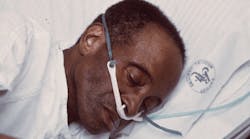NIOSH will offer a series of free, confidential health screenings to coal miners later this month to provide early detection of coal workers’ pneumoconiosis.
“Provided through the state-of-the-art NIOSH mobile testing unit at convenient community and mine locations,” NIOSH said it will offer the health screenings throughout Oklahoma, Louisiana, Texas, New Mexico, Arizona, southern Utah and southern Colorado.
Coal workers’ pneumoconiosis – also known as black lung – is a serious but preventable occupational lung disease in coal miners caused by breathing respirable coalmine dust.
“This public-health outreach is in response to a well-documented increase in serious disease,” the agency noted.
The first visit is scheduled for the week of April 20 in areas throughout Oklahoma, Louisiana and Texas. All current and former coal miners – working in underground and surface mines – can participate, the agency said.
The screening will include a work-history questionnaire, a chest X-ray, spirometry testing and blood-pressure screening, according to NIOSH. Typically, the process takes about 25 minutes.
NIOSH provides the individual miners with the results of their own screenings. By law, each person’s results are confidential. No individual information is publicly disclosed, NIOSH noted.
The prevalence of black lung among long-term underground miners who participated in chest X-ray screenings decreased from the 1970s to the 1990s, according to NIOSH. However, the prevalence of black lung among U.S. coal miners has increased since the 1990s.
Coal workers’ pneumoconiosis can occur in mines of all sizes. The more serious advanced form of the disease – called progressive massive fibrosis – is much more prevalent among miners from underground mines with fewer than 50 workers, according to NIOSH. Miners who work in particular areas of the country, in certain mining jobs and in these smaller mines have an increased risk of developing coal workers’ pneumoconiosis.
NIOSH provides the health screenings through its Enhanced Coal Workers’ Health Surveillance Program.
